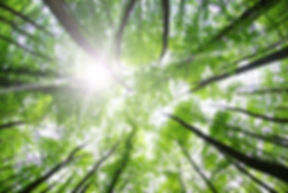
同恩中医诊所 Ace AcuHerb Clinic
针灸 艾灸 拔罐 推拿 中药组方和煎煮等 治疗关节 腰背 肩膀 颈椎 疼痛, 胃肠道及妇科疑难杂症
9285 Dowdy Drive,suite 103, San Diego, California 92126; Tel: 858-842-8817
Treatments
Acupuncture
Acupressure
Massage Therapy
Moxibustion
Chinese Herb Formulation
Cupping
Gua Sha
Acupuncture
Acupuncture means insertion of needles into superficial structures of the body (skin, subcutaneous tissue, muscles) – usually at acupuncture points (acupoints) – and their subsequent manipulation; this aims at influencing the flow of qi. According to TCM it relieves pain and treats (and prevents) various diseases. Acupuncture Efficacy: A 2012 meta-analysis concluded that acupuncture was effective for the treatment of four different types of chronic pain.
Electroacupuncture is a form of acupuncture in which acupuncture needles are attached to a device that generates continuous electric pulses. Another term ispercutaneous electrical nerve stimulation.
Fire-Vacuum cupping and acupressure are TCM methods of attempting to stimulate the flow of qi and body fluids by various cups and bare handed techniques that do not involve needles.
Sonopuncture or acutonics is a stimulation of the body similar to acupuncture, but using sound instead of needles. This may be done using purpose-built transducers to direct a narrow ultrasound beam to a depth of 6–8 centimetres at acupuncture meridian points on the body. Alternatively, tuning forks or other sound emitting devices are used.
Ear acupuncture is a form of acupuncture developed in France which is based on the assumption of reflexological representation of the entire body in the outer ear.
Scalp acupuncture is likewise based on reflexological considerations regarding the scalp area; it has been developed in Japan.
Hand acupuncture similarly centers around assumed reflex zones of the hand; it has been developed in Korea.
Medical acupuncture tries to integrate reflexological concepts, the trigger point model, and anatomical insights (such as dermatome distribution) into acupuncture practice, and emphasizes a more formulaic approach to acupuncture point location.
Cosmetic acupuncture is the use of acupuncture in an attempt to reduce wrinkles on the face.
Treatment Rate
$100.00 per visit Including initial consultation and about 1.5 hour treatments:
-
Tongue evaluation
-
Pulse diagnostics
-
Acupuncture and moxibustion treatments
-
Acu-Massage and cupping treatments
-
Gua Sha as needed
Traditional Chinese Medicine (TCM) diagnosis and herbal formula rate:
$75 / 10 day-Chinese herbal formulation in concentrated granule
-
Health consultation
-
Prescribe custom herbal formulation according to overall condition
-
Prepare TCM herbal medicine from GMP compliance manufactured products
-
Dose and taking method
Tui na (推拿) is a form of massage akin to acupressure (from which shiatsu evolved). Oriental massage is typically administered with the patient fully clothed, without the application of grease or oils. Choreography often involves thumb presses, rubbing, percussion, and stretches.
Qìgōng (气功 or 氣功) is a TCM system of exercise and meditation that combines regulated breathing, slow movement, and focused awareness, purportedly to cultivate and balance qi. One branch of qigong is qigong massage, in which the practitioner combines massage techniques with awareness of the acupuncture channels and points.
Cupping (拔罐) is a type of Chinese massage, consisting of placing several glass "cups" (open spheres) on the body. A match is lit and placed inside the cup and then removed before placing the cup against the skin. As the air in the cup is heated, it expands, and after placing in the skin, cools, creating lower pressure inside the cup that allows the cup to stick to the skin via suction. When combined with massage oil, the cups can be slid around the back, offering "reverse-pressure massage".
Moxibustion – Acupuncture is often accompanied by moxibustion, the burning of cone-shaped preparations of Artemisia vulgaris (mugwort) on or near the skin, often but not always near or on an acupuncture point. Traditionally acupuncture was used to treat acute conditions while moxibustion was used for chronic diseases. Moxibustion could be direct (the cone was placed directly on the skin and allowed to burn the skin producing a blister and eventually a scar), or indirect (either a cone of mugwort was placed on a slice of garlic, ginger or other vegetable, or a cylinder of mugwort was held above the skin, close enough to either warm or burn it).
Gua Sha (刮痧) is abrading the skin with pieces of smooth jade, bone, animal tusks or horns or smooth stones; until red spots then bruising cover the area to which it is done. It is believed that this treatment is for almost any ailment including cholera. The red spots and bruising take 3 to 10 days to heal; there is often some soreness in the area that has been treated.
Bone-setting or Diē-dá (跌打) is usually practiced by martial artists who know aspects of Chinese medicine that apply to the treatment of trauma and injuries such as bone fractures, sprains, and bruises. Some of these specialists may also use or recommend other disciplines of Chinese medical therapies (or Western medicine in modern times) if serious injury is involved. Such practice of bone-setting (整骨 or 正骨) is not common in the West.
Chinese food therapy: Most of them are herbal soups.

执照中医师, 中药师, Acupuncture, Physical therapies, 针灸, 开方, 推拿, 治疗各种疼痛 疑难杂症

Gradually advanced TCM theory is unique and effective. It has been practiced in China and other Asian countries for thousands of years.

We carry crude traditional Chinese herbs and their preparations (extract, instant powder, paste, oil, capsule, pill and tablet ...)

执照中医师, 中药师, Acupuncture, Physical therapies, 针灸, 开方, 推拿, 治疗各种疼痛 疑难杂症